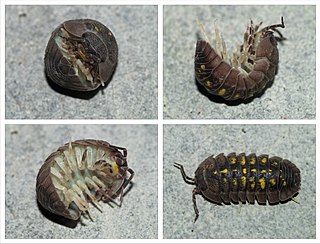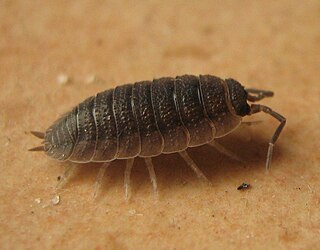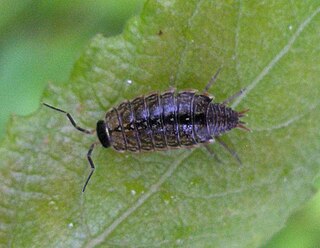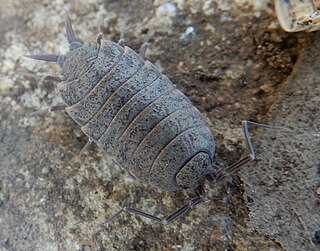| Armadillidae | |
|---|---|
 | |
| Venezillo parvus | |
| Scientific classification | |
| Domain: | Eukaryota |
| Kingdom: | Animalia |
| Phylum: | Arthropoda |
| Class: | Malacostraca |
| Superorder: | Peracarida |
| Order: | Isopoda |
| Suborder: | Oniscidea |
| Family: | Armadillidae Brandt, 1831 |
| Type genus | |
| Armadillo Duméril, 1816 | |
| Diversity | |
| c. 80 genera, 700 species | |
| Synonyms | |
Cubaridae Brandt, 1833 | |



Armadillidae is a family of woodlice (Oniscidea; terrestrial crustaceans), comprising around 80 genera and 700 species. It is the largest family of Oniscidea, and one of the most species-rich families of the entire Isopoda. [1] [2] Most of the armadillidae taxa are not monophyletic. Armadillids generally have a strongly convex body shape, with some rather shallowly convex. [3] Like members of the woodlice family Armadillidiidae, armadillids are capable of enrolling into a sphere (conglobation), and are commonly known as pill bugs. [4] [5] Some species, however, have secondarily lost their conglobation ability. For example, a species exist in which the males lack the inner face of the coxal plates and are therefore unable to conglobate. [6] Armadillids differ from the Armadillidiidae in that the antennae are fully enclosed within the sphere. [7]
Contents
Species of Armadillidae occur in a variety of habitats including forests, savannas, and arid regions. Armadillids occur natively in the Afrotropics, Asia, Australia, the Neotropics, and the Mediterranean region of Europe. [8] A few poorly-known species occur in North America north of Mexico, and some are introduced. [9] [10]
The family Armadillidae was erected by German naturalist Johann Friedrich von Brandt in 1831, although the earliest named genus now assigned to the family is Armadillo, described by French zoologist André Marie Constant Duméril in 1816. The German zoologist Karl Wilhelm Verhoeff described nearly one quarter of currently recognized genera (17).










